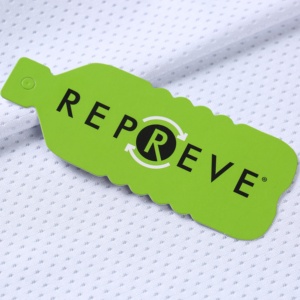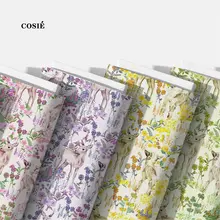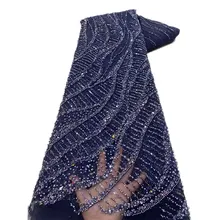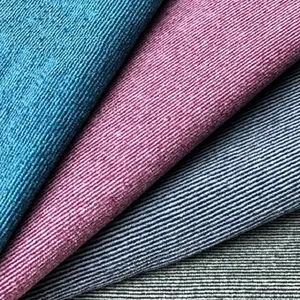RPET Is a recycled Polyethylene terephthalate (PET) that is a versatile thermoplastic polymer that belongs to the RPET polyester polymer group, which is known for its superior properties in terms of mechanical, thermal, and chemical resistance. Products made from polyethylene terephthalate plastic are fully recyclable. This is because PET plastic has a low diffusion coefficient compared to other plastic materials. For this reason, PET plastic is the most recycled plastic in the world.
Characteristics and advantages of RPET fabrics
PET products or plastic packaging will be collected and processed through special chemical handling stages at the RPET fabric factories, where the process is intended to decompose PET into raw materials, which are then reprocessed into recycled PET plastic in the form of flakes. The recycled PET plastic flakes are then reprocessed into various products, including fiber for the manufacture of carpets, RPET clothing, RPET nylon, RPET mesh, RPET canvas, containers for food and non-food products, plastic rolls, and sheets. Here are some characteristics and advantages of PET Plastic: It is very hard and solid, so it is easy and efficient to make packaging. Furthermore, it is known to have very good resistance to air (oxygen and carbon dioxide) and moisture. It also exhibits excellent electrical insulating properties. RPET has a wide use of temperature range, from -60 to 130 degrees Celsius. Recycled poly RPET is suitable for the production of transparent fabrics. Recycled RPET is also not easily broken, so it is suitable as a substitute component for glass in several industrial applications or needs. PET is easy to recycle, and it is safe to use for food packaging.
How is RPET produced in factories?
The bottles are first compressed and loaded into lorries and sent to the factory. After that, the bottle pieces were separated according to color, size, and quality while the lid was removed. The bottles are then machine-crushed into flakes which are then washed, dried, and thawed. The plastic thread is also formed through the nozzles, and after drying, it is cut into fine pieces. From there, RPET fabric is produced and goes through a 'narrowing' process. It is then formed into bubbles and used in the final stage of material production for the manufacture of RPET materials.





































 浙公网安备 33010002000092号
浙公网安备 33010002000092号 浙B2-20120091-4
浙B2-20120091-4